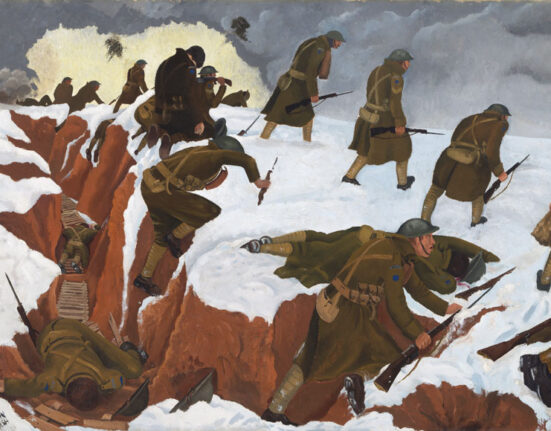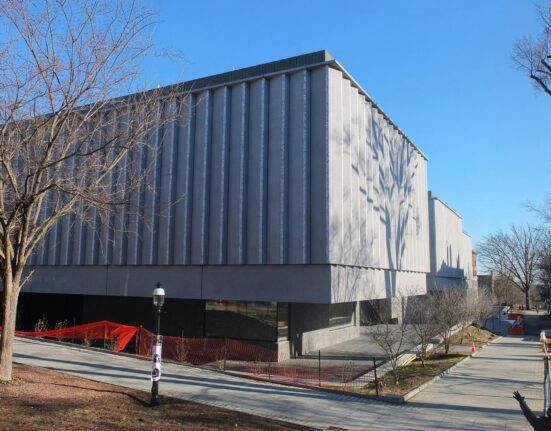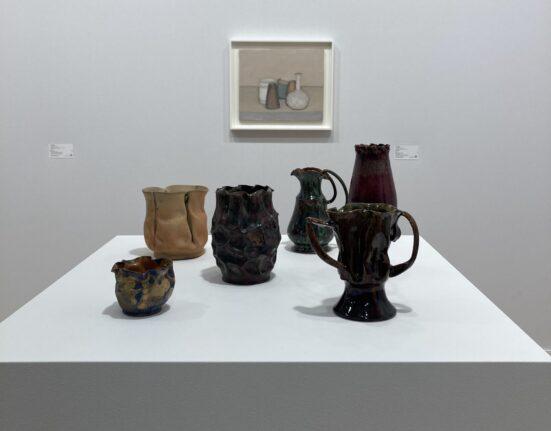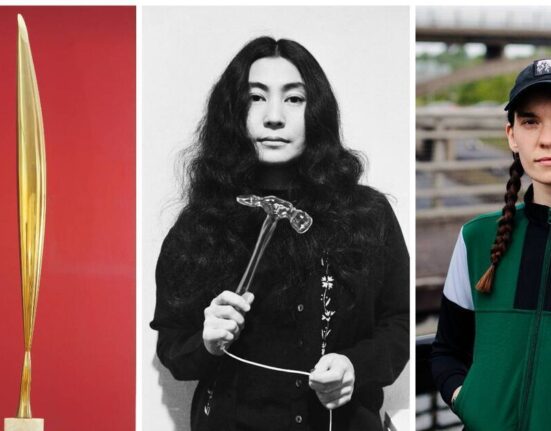‘Art Paris’ runs from 30 March through to 2 April in the French capital. It comes as French artists express concern over an EU tax hike on art sales.
From its conception in 1999, Art Paris has aimed to make the modern and contemporary art world more accessible to the general public.
The annual event sets itself apart from other international art fairs by featuring a blend of established and up-and-coming galleries, which offer a glimpse into the lesser-known corners of the global art scene. It’s also more affordable, with most works priced between €10,000 and €50,000.
This year, for its 25th anniversary, Art Paris is bringing together 134 galleries from 25 countries representing 900 artists – 60% French and 40% international.
Its two themes – “Art & Commitment” and “Exile” – address major questions plaguing artists today: What role do artists play in the face of multiplying global crises? And how can artists continue to create through persecution and exile?
Two special exhibitions gather works under each of these themes, and several other solo and duo exhibitions feature works by artists around the world.
As the art market recovers from the pandemic, new challenges are emerging for the art world as this year’s edition of Art Paris takes on the French capital.
French art market under threat
A new EU directive threatens to put a damper on France’s art market, and French artists and gallerists are up in arms about it.
Over the past 20 years, France’s share of the global art market has more than doubled from 3% to 7%. Making an extraordinary comeback after nearly a century’s decline, France is once again Europe’s top market for art, accounting for half of all art sale revenues on the continent.
This steady growth can be traced to a host of new internationally-minded galleries, but also in large part to a reduced VAT tax rate – any art sold in France, even imported art, is taxed 5.5% instead of the usual 20%.
But a new EU directive, passed in a little-publicised unanimous vote last year, would effectively put an end to that tax exemption starting in 2025, bringing France in line with other EU member states.
France’s Professional Committee of Art Galleries (CPGA) called the directive an “irremediable attack on the art market in France” and over 120 French artists signed an open letter in newspaper Le Monde warning that the directive would crush the country’s art industry and force French artworks to be sold elsewhere.
With a focus on French art and artists, Art Paris is the first major art fair in the capital since the new tax directive made headlines earlier this month. Big-name galleries and artists that have come out against the directive, like Paris’ Galerie Perrotin and French street artist JR, will be exhibiting works at the show.
Street art gaining notoriety
Once seen as an eyesore on the walls and buildings of urban centres, street art has emerged in recent years as an exciting new playground for art collectors, with works from artists like Banksy and Shepard Fairey selling for huge sums at auction.
Street art’s affordability has made it a hit with newer art collectors, as well as younger generations who grew up being influenced by hip hop and social justice movements.
One of the great champions of street art in the contemporary art market is Magda Danysz, founder of the Danysz gallery, which has branches in Paris, Shanghai and London. Danysz wrote The Anthology of Street Art and has long pushed for street artists to be featured in exhibitions and galleries around the world.
At this year’s Art Paris, the Danysz gallery is exhibiting the work of up-and-coming French artist RaKaJoo, who got his start painting murals in the Paris suburbs. The self-taught artist paints portraits and street scenes depicting life in urban France.
Danysz gallery also represents Portuguese street artist Vhils, who creates his works by chiselling away layers of rock on urban walls.
A dialogue between East and West
Another concern for European gallerists over the past decade has been developing business in the Far East, as mainland China, Singapore, South Korea and Hong Kong cement themselves as art market powerhouses.
Asia is the largest art market in the world, with wealthy collectors buying billions of euros worth of artwork each year at auction houses in Hong Kong, and galleries in Seoul and Shanghai.
According to Sotheby’s Asia, collectors on the continent have in recent years started branching out to increasingly include work by Western artists in their collections.
Established European galleries have long opened branches in hubs like Shanghai and Hong Kong, but newer galleries are finding unique ways to stand out and appeal to a new generation of Eastern art collectors.
Galerie Marguo, which opened in Paris in the fall of 2020, is a prime example of a modern Paris art gallery that blends East and West by featuring lesser-known international artists, many of Asian descent.
At this year’s Art Paris, Galerie Marguo is featuring artists including Sean Shim-Boyle, whose work explores identity as seen through the lens of his experience as a biracial Korean-Canadian.
Art Paris is open to the public at Paris’ Grand Palais Éphémère from 30 March to 2 April.







